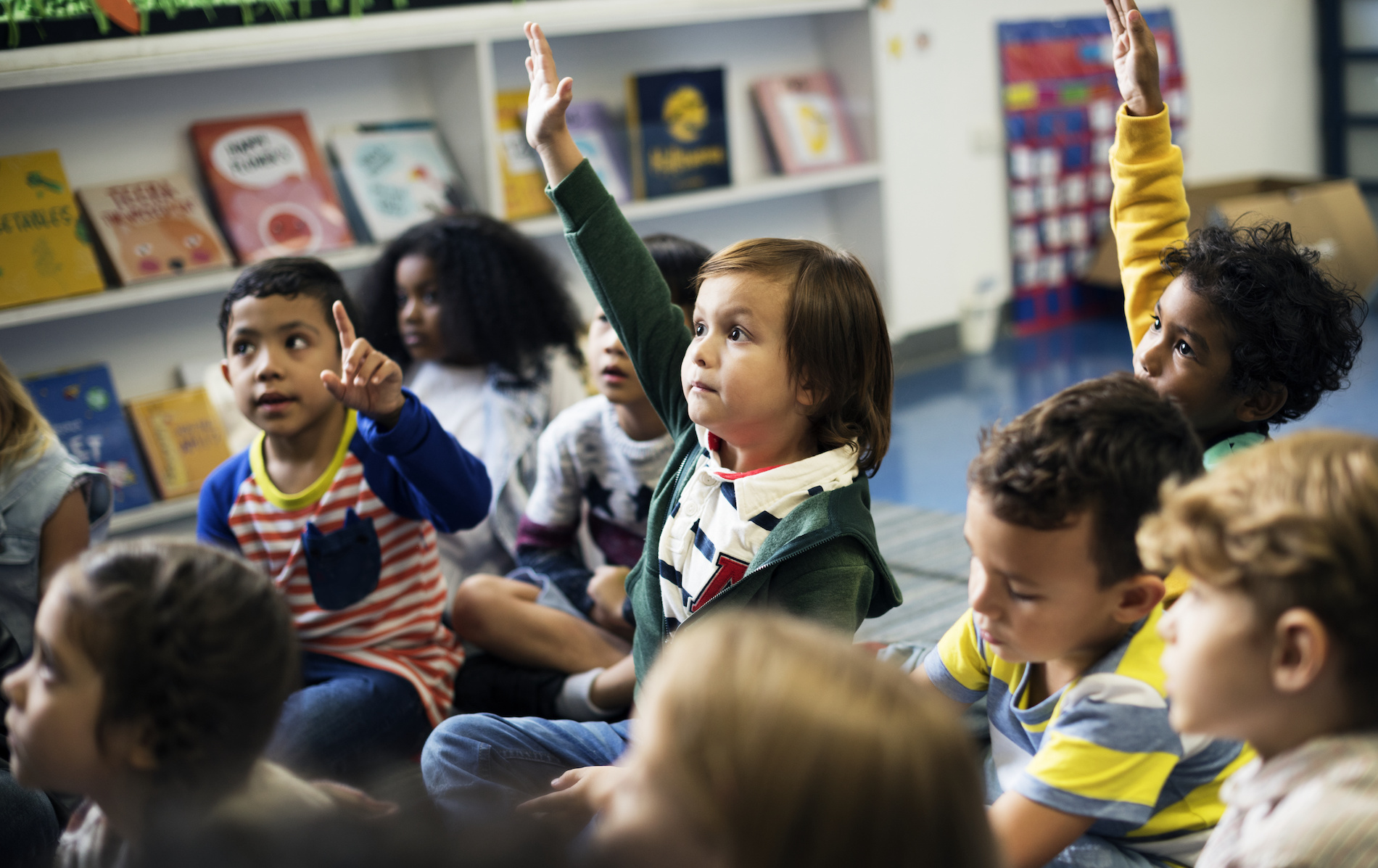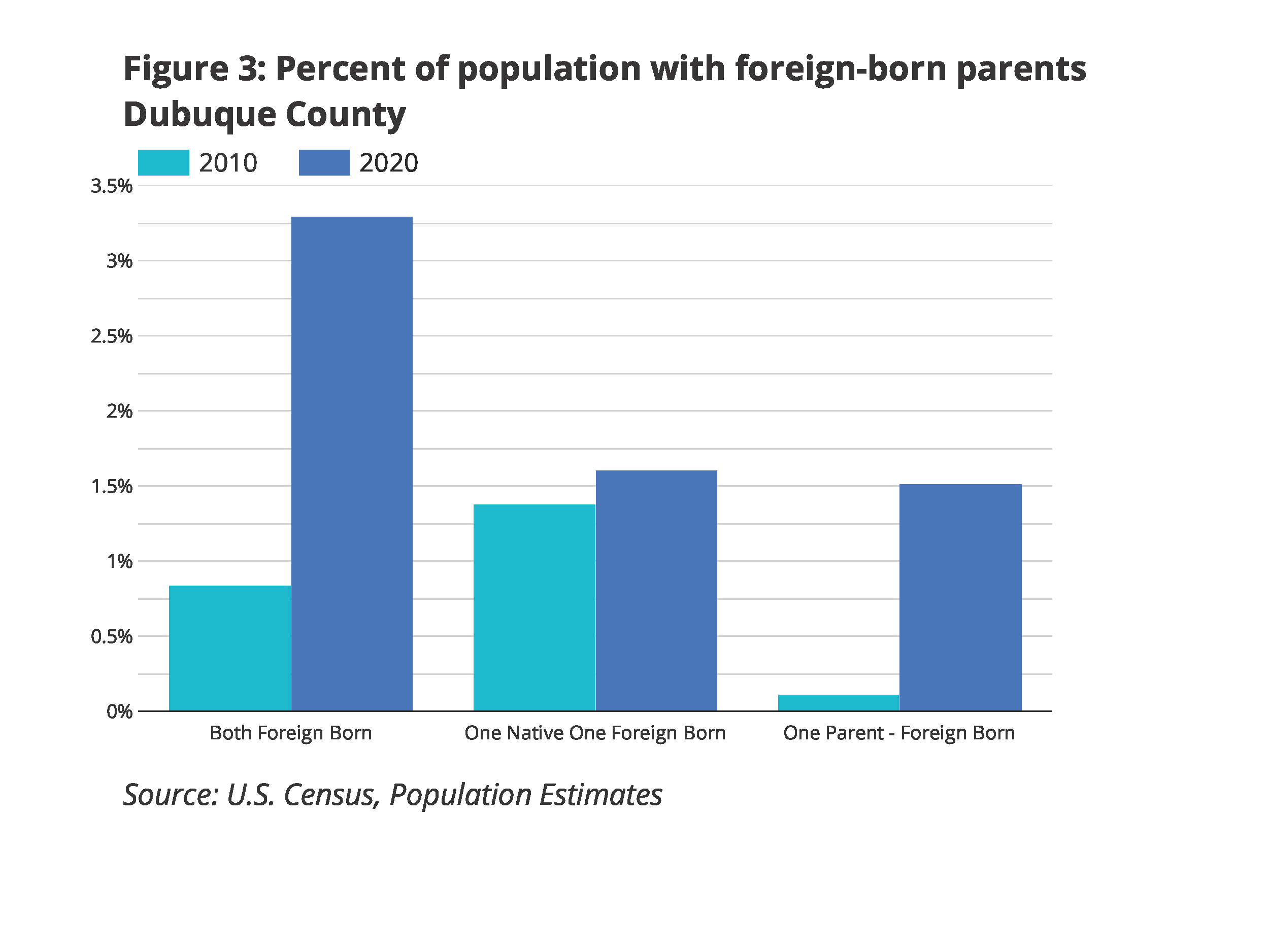Education and Youth Support

The percentage of youth under the age of eighteen in Dubuque County who have at least one foreign-born parent rose from 2.33% in 2010 to 6.42% in 2020. During a period when the number of young people overall in Dubuque County has slightly declined, the number of these children has nearly tripled. If the region’s demographics continue to move in the same direction, immigrant families will make up an even larger portion of the region’s population. Enabling these young people to thrive will have positive future ramifications as they become the next generation of parents, workers, and leaders.

Interviews and focus group sessions have identified the benefits that immigrant children and youth bring to the community. These include, but are not limited to:
- Cultural diversity and creativity: Immigrant youth bring different perspectives and backgrounds to a community, helping to generate new ideas and expose other young people to different ways of thinking. Evidence suggests that diverse classrooms can have important cognitive, social, and emotional benefits for all students in the classroom.[1]
- Hard working: The hard work and dedication of immigrant youth may best be demonstrated by local Guatemalan unaccompanied minors, many of whom attend school while also working to support themselves and their families.
- Cultural navigation: Many immigrant children already act as important cultural navigators for their families, often serving as interpreters, advisors, and connectors.
- Civic engagement: Immigrant youth have expressed a strong interest in leading activities to help benefit both their local immigrant communities and the wider population where they live. Recent examples from Dubuque include the involvement of youth in the planning of the Latinx festival and the Marshallese Manit Day celebration and presentations carried out by the Pacific Islander Club at Hempstead and Senior High School.
- Desire for education: Many immigrant families cite education as one of their primary reasons for coming to the U.S., and to Northeast Iowa.
- New community opportunities: The work done by immigrant youth has already created new events and other cultural opportunities that otherwise would not be available in the region. This helps make the region a more welcoming place for diverse populations, enables cross-cultural connections, and increases the cultural richness and variety of local offerings.
In short, young people from immigrant communities have significant potential to provide ongoing leadership for the region. However, a number of barriers disproportionately impact students from immigrant communities. One of the largest issues involves language skills, as English language learners can struggle to engage with curriculums taught primarily in English. This is particularly true for students who may have come to the U.S. already facing an education gap, especially high school students who may have only had a few years of formal education. Feelings of disconnection between immigrant students and their schools, teachers, and the rest of the student body can also impact academic success. Students have expressed feeling that their school “isn’t for them” or is not a key part of their future career aspirations.
These barriers can significantly impact academic achievement. English learners score more than fifty percentage points lower in both reading and math proficiency than the general student body at both the Dubuque Community School District and the Western Dubuque Community School District. Only 11.3% of Pacific Islander students in Dubuque are currently reading at grade-level proficiency, and four-year graduation rates are nearly 13% lower for Hispanic students than the general population, and over 54% lower for Pacific Islanders.[2] For older immigrants, this often leads to greater disparity in educational attainment. Foreign-born individuals in Dubuque County over the age of twenty-five are more than four times as likely to not have graduated high school as is the native-born population. At the same time, a greater percentage of the foreign-born population has a bachelor’s degree or higher than does the native-born population. Despite the high level of academic achievement among many immigrants, over a quarter of the population above the age of twenty-five has still not achieved a high school diploma or equivalency.[3]
Responsibility for improving educational outcomes for children from immigrant communities should be a priority for the community as a whole. By encouraging greater connection between immigrant families and the general population policymakers and stakeholders can positively impact academic achievement for immigrant children across the region.
Recommendations
To see a list of recommendations that should be considered to support local youth, click here.
Continue Reading
Use the following links to learn more about different issues facing immigrant communities:
- For Case Management, click here
- For Health, click here
- For Housing, click here
- For Legal Assistance, click here
- For Translation and Interpretation, click here
- For Workforce and Employment, click here
To return to the Immigration Community Assessment welcome page, click here.
